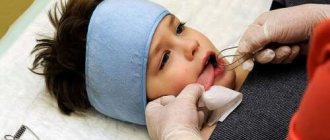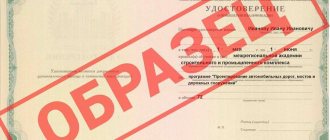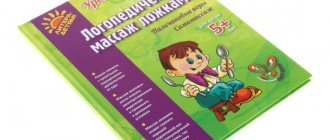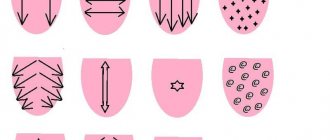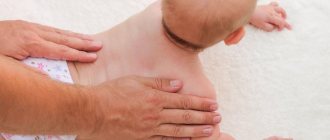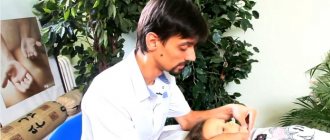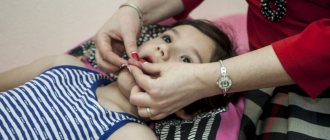An innovative method of probe massage was developed by Doctor of Pedagogical Sciences E.V. Novikova. Its essence lies in the use of special devices, probes, which act directly on the organs of articulation and reflex zones of the brain responsible for the development of speech. Probe speech therapy massage is today recognized as the most effective non-traditional technique in the field of speech therapy.
Types of tongue massage?
Tongue massage can be done manually. Manual speech therapy massage is performed by a speech therapist using the fingertips. Manual speech therapy massage is both an independent stage of tongue massage and can be a preparatory stage for the second type of speech therapy massage - probe massage of the tongue.
The second type of speech therapy massage is probe massage. Probe speech therapy massage is performed with special speech therapy probes. Speech therapy probes are special “sticks” that have different shapes to influence different structures of the oral cavity. Speech therapy probe massage is deeper than manual tongue massage. In some cases, a specialist may replace the probe with a toothbrush or other device. The main thing is that the specialist clearly understands what he wants to achieve!
Can massage be speech therapy?
Everyone is familiar with the concept of massage in general, the usefulness of which for many conditions is beyond doubt. Under the influence of the work of a massage therapist, blood circulation in tissues improves, their nutrition improves, and the movement of lymph accelerates. The impact on the muscles improves their elasticity and ability to contract and relax.
Based on the need, various movements are used to either increase muscle tone or relax and get rid of spasticity.
Children are often prescribed speech therapy massage for dysarthria, voice disorders, mental retardation and mental retardation, correction of speech disorders accompanying cerebral palsy and other neurological diseases.
As a result of improved blood and lymph movement, there is also a more active blood supply to the blood vessels of the brain, which affects its functioning and the processes of restoration of the central nervous system.
With the help of speech therapy massage it is possible to achieve:
- Improving the functioning of the muscles that make up the speech apparatus.
- Reducing the increased tone of the muscles involved in the reproduction of sounds.
- Better control of the child over the movements of the tongue and facial muscles.
- Increases the sensitivity of the entire speech apparatus.
- Reduce salivation.
- Creating conditions for the functioning of the speech organs, which prepare the child for clear and correct pronunciation of sounds.
Speech therapy massage can be:
- Classic. As the name implies, it uses conventional massage techniques, but in this case the facial muscles, cervical-collar area, and tongue are massaged.
- Pointed. In this case, the active points of the body are affected, relaxing or stimulating them.
- Zondov. It is distinguished by the use of a set of probes designed specifically for speech therapy purposes. With the help of these probes, the necessary areas of the articulatory apparatus are affected. It has been proven to be highly effective when working to improve sound pronunciation.
- Hardware. The process is based on the use of devices.
According to its purpose, speech therapy massage is divided into:
- activating the work of articulatory muscles
- relaxing.
Who does tongue massage? Who has special knowledge for this?
Despite the fact that the word massage implies the participation of a massage therapist in the process, in the case of speech therapy massage this is not the case! Speech therapists provide speech therapy massage! But not all speech therapists are ready and able to perform massage. Typically, a speech therapist who has gained experience and understands that many problems cannot be solved without speech therapy massage receives additional education on the topic of “speech therapy massage.” After training and receiving a special document, a speech therapist is considered a tongue massage specialist.
It should be added that you can do tongue massage yourself, for example, when a mother does basic techniques to her child. But all the same, it is better to entrust the appointment of massage and control over its effectiveness to an experienced speech therapist-myofunctional therapist! What distinguishes a simple speech therapist from a speech therapist-myofunctional therapist is that the latter understands in more detail and is able to work with the muscles of the articulatory apparatus and masticatory organ.
What problems can probe massage solve?
Massaging a child’s tongue for speech development is an effective tool in the hands of an experienced speech therapist. It allows you to solve a number of important problems:
- correction of phoneme pronunciation;
- stimulating breathing through the diaphragm;
- strengthening the pharyngeal reflex;
- formation of the correct trajectory of movement of the organs of the articulatory apparatus;
- improvement of the condition of the vocal cords;
- improving voice quality.
How is tongue massage done?
Tongue massage is carried out in a special speech therapy room. For example, a speech therapist’s office at a Family Dental Clinic looks like this:
Speech therapy massage is carried out in a relaxed state for the patient. This is usually lying down, reclining or sitting. If a tongue massage is performed on a small child, then the child sits on the mother’s lap. A tongue massage takes about 15 minutes. It is usually perceived positively by patients because it does not cause negative or painful conditions. The specialist performs a tongue massage wearing special disposable gloves. Massage probes are sterilized after each patient! This is an advantageous difference between medical and other organizations where tongue massage can be performed, for example, kindergarten, etc. In institutions of this type, such as kindergartens, speech therapists are not provided with either gloves or sterilizers. Therefore, they massage with bare hands and wipe the probes with alcohol. This, from our point of view, is not enough to ensure patient safety!
Face massage
A classic massage option that is suitable for children with any degree of dysarthria. Carry out this type of vibration therapy with gloves. Remove jewelry and trim your nails short. Repeat all movements 3-5 times. Increase the duration of the procedure gradually.
The movement pattern is as follows:
- The forehead is kneaded smoothly from the central point to the temples. Press into your head with 2-3 fingers. Press your palm tightly, but not too hard.
- From eyebrows to hair, move in waves with all your fingers. Stroking movements.
- Stretch the cheek muscles from the mouth to the temples, from the cheekbone down to the lower part of the face.
- Rub the muscles on the wings of your nose up and down smoothly.
- Stroke the nasolabial fold to the wing of the nose to the corners of the lips.
- Stretch your lips with vibration movements. Move both hands along the top of your lips, spreading your fingers in different directions (from the middle to the corners).
- The eyelids are warmed up with circular strokes without pressure. Move your fingers clockwise around the eyes, then back.
- Rub your chin.
- Stroke your ears.
If a child has facial asymmetry, a skew to one side, or muscles that are cramped, pay more attention to the affected side.
On a note! Be sure to include several facial massage techniques in your treatment for cortical dysarthria before kneading your tongue.
Who is tongue massage recommended for?
Tongue massage can be both stimulating and relaxing. And also combined, when one area of the tongue needs to be relaxed and the other stimulated! This is where the indications for tongue massage come from. Speech therapy massage is indicated for patients:
- with speech impairments;
- disorders of chewing and swallowing function;
- with malocclusion;
- undergoing orthodontic treatment (bite correction and teeth straightening);
- undergoing orthopedic treatment (dental prosthetics);
- with a short frenulum of the tongue for the purpose of non-surgical stretching;
- with hypertonicity of the tongue and masticatory muscles (bruxists and claunchers - people who clench and grind their teeth);
- with increased stress on the speech apparatus (teachers, lecturers, etc.).
Indications and contraindications for speech therapy massage of a child’s tongue
| Indications: | Relative contraindications: |
|
|
Speech therapy massage and dentistry! What's the connection? And what do we use in Dial-Dent?
People with malocclusion and uneven teeth almost always have improper and unbalanced functioning of the muscles of the tongue, lips, chewing muscles and other muscles of the masticatory organ. Moreover, the modern concept of the causes of the formation of bite defects suggests that most dental defects are caused by improperly working muscles. Incorrect speech, improper functioning of the tongue when swallowing and chewing, asymmetrical pressure of the tongue - all this leads to the fact that the teeth can move in different directions under certain conditions. This is how a deformation of the bite occurs, which is more pronounced the more incorrectly the tongue and other muscles work.
Most orthodontists, without delving into the work of muscles and without consulting with speech therapists, install braces or aligners and straighten the teeth without taking into account the condition of the muscles. This approach is outdated and almost always leads to relapse, when the teeth become crooked again some time after treatment. Knowing this, older orthodontists force their patients to wear retainers. Retainers are structures that keep teeth aligned. This could be a wire glued to the teeth or a plastic mouthguard to wear at night.
At Dial-Dent, we always take into account the muscular cause of malocclusion. The participation of a speech therapist in the diagnosis and in the process of straightening teeth makes it possible to remove or correct the myofunctional causes of deformities. This interdisciplinary approach is more modern and gives the best and most stable treatment results! After treatment, relapses do not occur because muscle balances are leveled. Accordingly, the orthodontic treatment itself occurs faster and without problems with the participation of a speech therapist-myofunctional therapist.
Cost of tongue massage at Dial-Dent. Specialist in speech therapy massage.
At the Family Dental Tongue Massage or speech therapy massage, speech therapist-myofunctional therapist Tatyana Borisovna Tsukor is engaged. Graduated from Moscow Pedagogical State University. Lenin. Work experience more than 15 years. Speech therapist teacher of the highest qualification category. Laureate of the competitions “Heart given to children 2008” and “Heart given to children 2010”.
The cost of a session with a speech therapist is 3,500 rubles. The duration of the session is from 30 minutes to 50 minutes depending on the task and the age of the patient. If necessary, the session also includes speech therapy massage.
Being a unique speech therapist who has been collaborating with dentists for a long time and successfully, Tsukor T.B. conducts training courses for both orthodontists and speech therapists. The course covers all aspects of speech therapy massage. Of course, every orthodontist should know about the capabilities of such a powerful tool as speech therapy massage. Training is carried out both as part of presentations at congresses, and individually or in small groups.
Our speech therapist also conducts classes via Skype. The cost of such a lesson is 2500 rubles. As you understand, speech therapy massage cannot be done via Skype, so if you need a massage, you will still have to come to Dial-Dent.
You can make an appointment with the Family Dental speech therapist Tatyana Borisovna Tsukor by calling the clinic +7-499-110-18-01 or using the form on the website. You can ask questions about speech therapy, as well as massage training, to T.B. Zukor on her page in.
